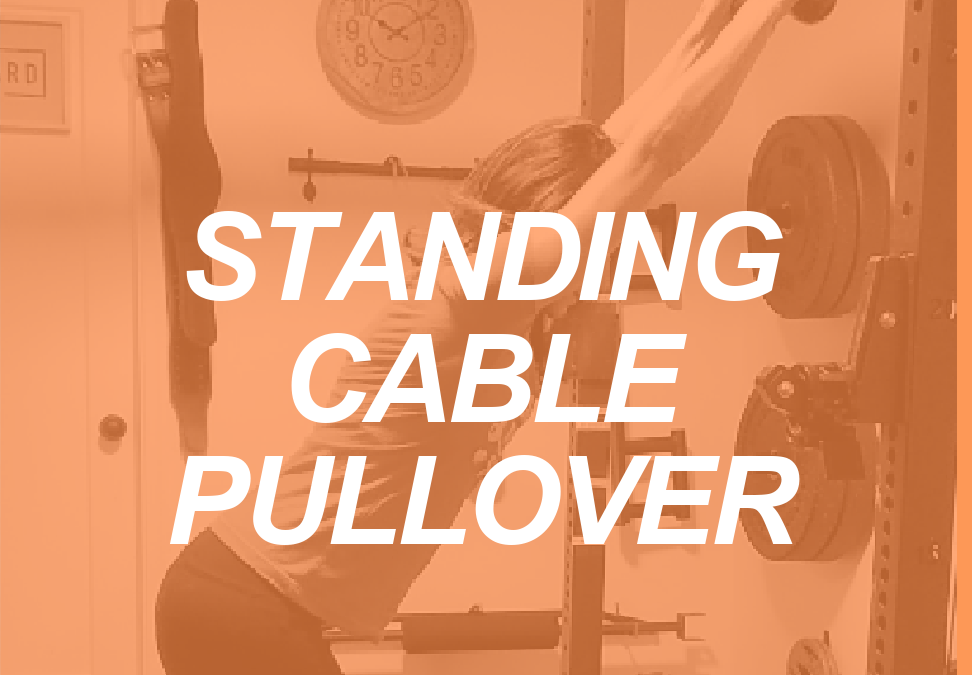While pull-ups and pull-downs reign supreme when building strength and size (as all compound exercises do) on the lats, sometimes we need to offer variations that can still adequately challenge this muscle—especially when working with clients in a home gym. Every pullover movement is, in fact, full shoulder flexion moving into extension, and will specifically tax the latissimus dorsi. Here’s how to do a standing cable pullover and why your clients should.
Why a Pullover?
A pullover recruits latissimus dorsi, rear deltoids, and even the pectoralis major.
What makes this exercise favorable is that it requires much less weight due to the long levers and create a longer moment arm. In situations where heavy weight options are limited, this movement can really serve your hypertrophy clients well. A cable pulley system can be used as pictured below, or resistance bands, anchored in a door or looped over a stable surface
Additionally, a standing pullover will actively tax the core, as the abdominal muscles are recruited to stabilize the spine. This is one specific advantage over a lying pullover. You will find that the standing version is somewhat more challenging, not only because it is performed standing (obviously, that requires more energy than lying down), but the work in stabilizing the spine is almost as difficult as pulling the weight down with proper form.
Finally, a pullover is an excellent way to improve shoulder mobility while loading the joint. As long as the weight is kept light enough, utilizing the full range of motion available to the exerciser will improve start-range shoulder extension strength. With continued practice, a client with a shoulder flexion range of 170 degrees can move towards 180 degrees, stretching practices notwithstanding.
[sc name=”resistance” ][/sc]
How to do a Standing Cable Pullover
- Start with a lightweight for the very first set to test ability and strength when this movement is new. If using resistance bands, be sure to safely anchor the band above where hands can reach. If this is not possible, this exercise can be performed kneeling!
- If using a pulley system, you may use a straight bar, rope, or long handles (the more stable the attachment, the more manageable the exercise will be to perform).
- Take a hold of the resistance, and take a step back far enough to assume a semi-squat position. The torso should be in a 45-degree angle to the source of resistance.
- Flex shoulders with straight arms until they are as close to ears as possible. Adjust angle by hinging from the hips until arms are in full flexion. Arms will remain straight throughout the movement.
- Brace the core by taking in a breath first, then exhaling as the arms move into extension just until they are perpendicular to the floor. Nothing else should shift as the arms are moving into extension, including the elbows.
- Breathe in to return to the start position.
Programming the Pullover
Think of this movement as an accessory exercise for your hypertrophy and weight gain clients and a staple back movement for in-home fitness clients that may not be able to perform pull-ups (even assisted) or pull-downs. I have personally found the back to be the most challenging muscle group to incorporate into home fitness client routines since it is almost always the strongest upper body muscle group and rarely do clients have enough weight to meet the resistance requirements.
When utilized as an accessory exercise, think of it the same way as any other isolation movement: reps no less than 10 but no more than 15. It can be incorporated as a superset with a bicep movement or even a more difficult pulling exercise like a pull-down or chin-up if growth is the main goal. If strength is paramount, save this one for last after the heavy lifts.
If the pullover becomes central to your client’s back routine, you can make it more challenging, but progressively. Start with a high rep range (15-20) and slowly increase weight over time until your client can manage an 8-12 rep range.
[sc name=”anatomy” ][/sc]
NFPT Publisher Michele G Rogers, MA, NFPT-CPT and EBFA Barefoot Training Specialist manages and coordinates educational blogs and social media content for NFPT, as well as NFPT exam development. She’s been a personal trainer and health coach for over 20 years fueled by a lifetime passion for all things health and fitness. Her mission is to raise kinesthetic awareness and nurture a mind-body connection, helping people achieve a higher state of health and wellness. After battling and conquering chronic back pain and becoming a parent, Michele aims her training approach to emphasize fluidity of movement, corrective exercise, and pain resolution. She holds a master’s degree in Applied Health Psychology from Northern Arizona University. Follow Michele on Instagram.


